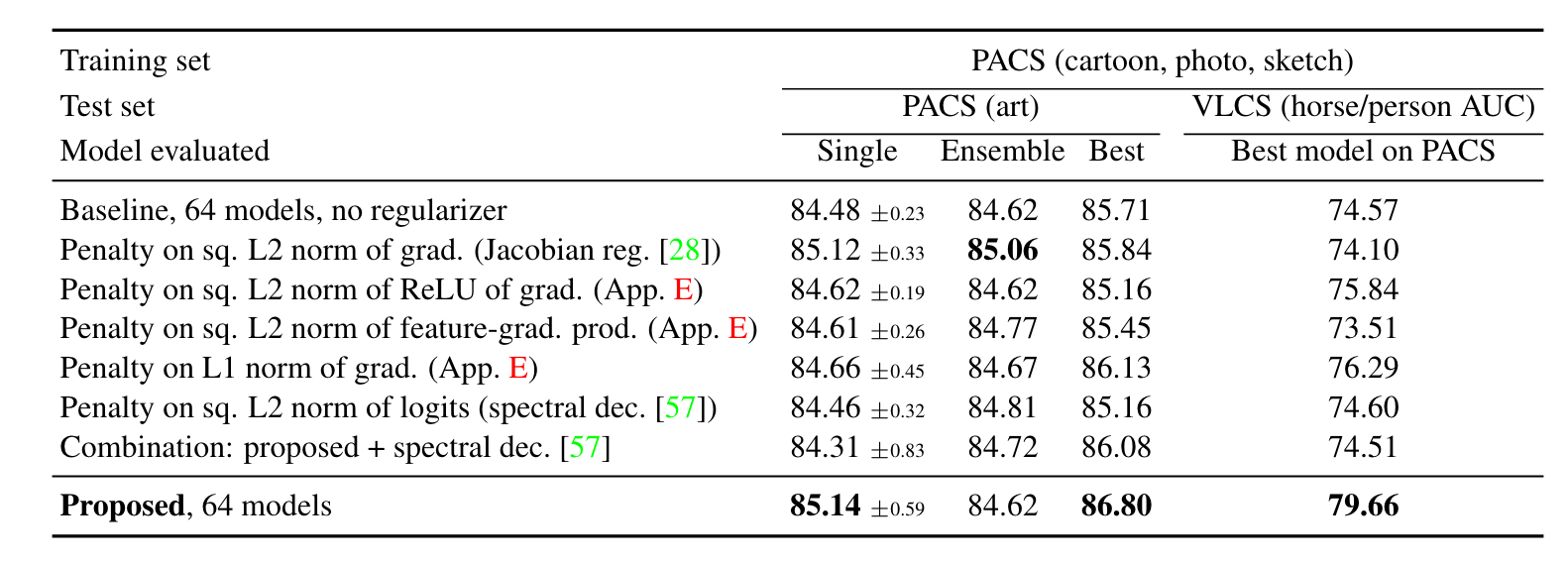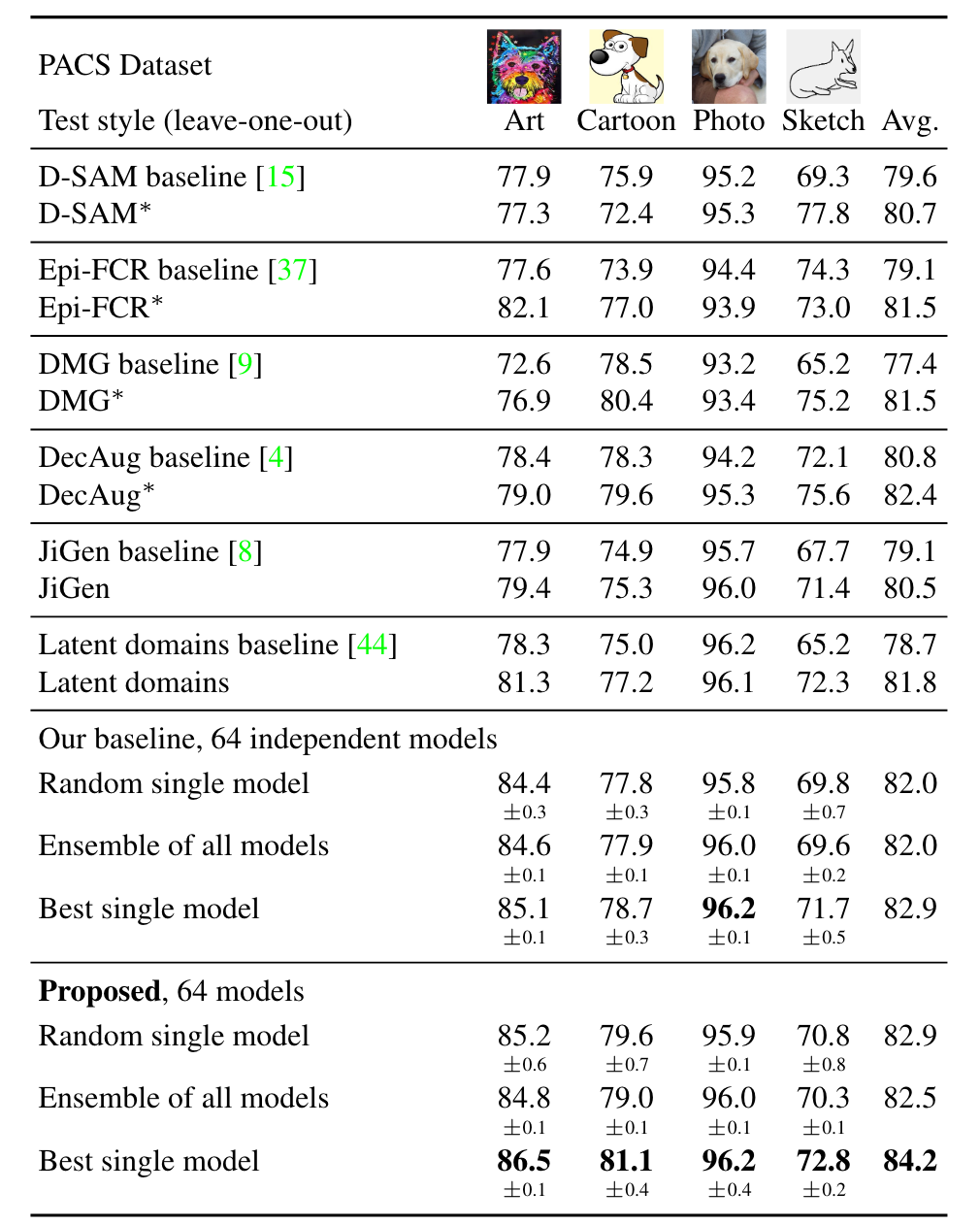FAQ
- How diversity can induce complexity?
- By assumption of the simplicity bias the model learned by default lies at one end of the space of solutions.
- Why use input gradients to quantify diversity?
- \cite{selvaraju2017grad} show input gradients are indicative of the features used by the model.
- Furthermore
- See more in Appendix A:
- Where to split a model into “feature extractor” and “classifier”?
- Why not design the diversity regularizer on the activations of the models but on the input gradients?
- Is the introduction of more diversity just a fancy random search?
Biased activity recognition
- This experiment try to figure out: Are these patterns relevant for OOD generalization in computer vision tasks?


Multi-dataset collages
- This experiment try to figure out: Can we learn predictive patterns otherwise ignored by standard SGD and existing regularizers?

Domain generalization
- PACS dataset is a standard benchmark for visual domain generalization (DG). PACS contains 4 domain(Art, Cartoon, Photo and Sketch) and each domain contains 7 categories.
- VLCS is included for an additional cross-dataset evaluation i.e. zero-shot transfer.

Domain generalization
Proposed method compared with existing methods on PACS.

Discussion
- Limitations of the method
- The main hyperparameters(the regularizer strength and the number of models learned) setting give no guarantees.
- Model fitting and model selection are equally hard?
- In this approach the two steps can be completely decoupled.
- Universality of inductive biases
- The inductive biases of any learning algorithm cannot be universally superior to another’s.
- This method does not affect inductive biases in a directed way. It only increases the variety of the learned models, so it could be seen as a “meta-regularizer”.
- Experiments also show that intuitive notions behind classical regularizers like smoothness (Jacobian regularization), sparsity (L1 norm), or simplicity (L2 norm) are sometimes detrimental.
References
- Selvaraju, R. R., Cogswell, M., Das, A., Vedantam, R., Parikh, D., and Batra, D. (2017). Grad-cam: Visual explanations from deep networks via gradient-based localization. In Proceedings of the IEEE international conference on computer vision, pages 618–626.
- Shah, H., Tamuly, K., Raghunathan, A., Jain, P., and Netrapalli, P. (2020). The pitfalls of simplicity bias in neural networks. Advances in Neural Information Processing Systems, 33:9573–9585.
- Teney, D., Abbasnejad, E., Lucey, S., and Van den Hengel, A. (2022). Evading the simplicity bias: Training a diverse set of models discovers solutions with superior ood generalization. In Proceedings of the IEEE/CVF conference on computer vision and pattern recognition, pages 16761–16772. Presenter: Yang Zhang SDS, Fudan University August 4, 2024 13 / 14